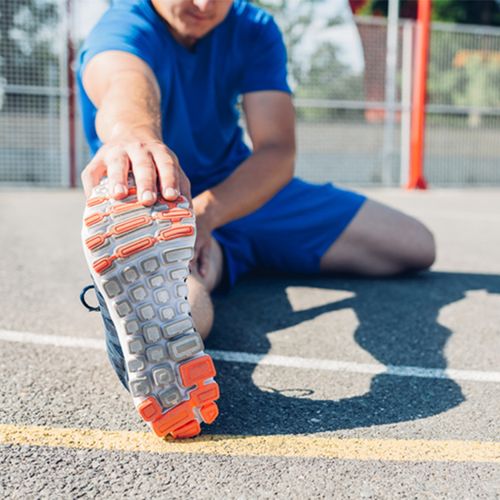Exercising the arms helps alleviate pain in the legs for people with peripheral arterial disease (PAD), in which narrowed arteries reduce blood flow to the limbs, a new study finds. Aerobic arm workouts can get patients up and walking better, too, researchers report.
In people with PAD, leg muscles can begin to hurt after walking just a short distance. The arteries have been narrowed by blockages, and not enough oxygen-rich blood makes it to the muscles, causing discomfort. The pain subsides after a few minutes of rest. Previous research found that treadmill training benefited PAD patients.
This study found that patients who used an arm ergometer-a tabletop device that has bicycle-like pedals that are operated by the armsgained improved walking ability.
"This is the first study showing that arm-only aerobics can provide results comparable to those seen with treadmill training," said study author Diane Treat-Jacobson, an assistant professor at the University of Minnesota School of Nursing.
The Study
For the study, 35 PAD patients (average age 67) were randomly divided into four groups—no exercise, treadmill exercise, arm ergometer exercise or exercise with both arm ergometer and treadmill.
The patients in the exercise groups worked out for one hour three times a week. After 12 weeks, patients in all three groups showed improvements in the total distance they could walk and how far they could walk without pain.
"We were happy to discover that upper-body aerobics can help patients with PAD increase the distance they can walk without pain. We need additional studies to confirm the results, better understand why and how this works, and also identify the best training regimen for patients," Treat-Jacobson said.
"In the meantime, our results provide evidence that aerobic upper-body exercise is a pain-free alternative for patients with PAD who cannot or do not wish to perform treadmill exercises because of leg pain or some other disability," she said
A Better Treadmill Workout
Gradually increase the treadmill incline as you run or walk at a brisk pace. To warm up, set the incline at an angle you can sustain comfortably—about a 2% incline for most people. After 10 to 15 minutes, increase the incline up to 3% to 5% over the course of one minute. Run or walk at that incline level for five to 10 minutes. Increase the incline as many as two to three times more, and run or walk for five to 10 minutes at each level.
Caution: Stay on the front of the belt. Running or walking at the back of the belt can result in injuries.
Also: Always check with your doctor before beginning an exercise program.
